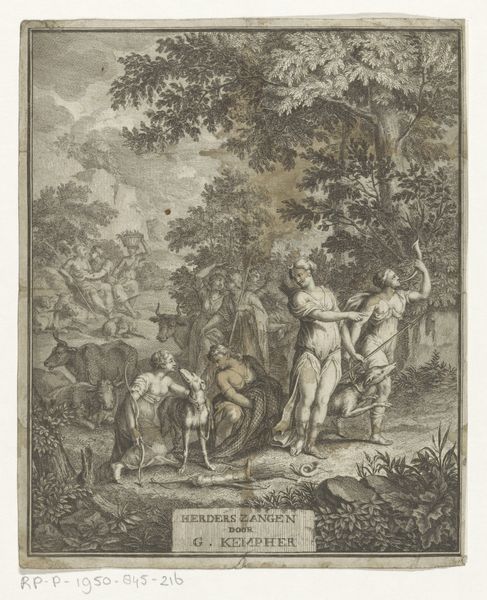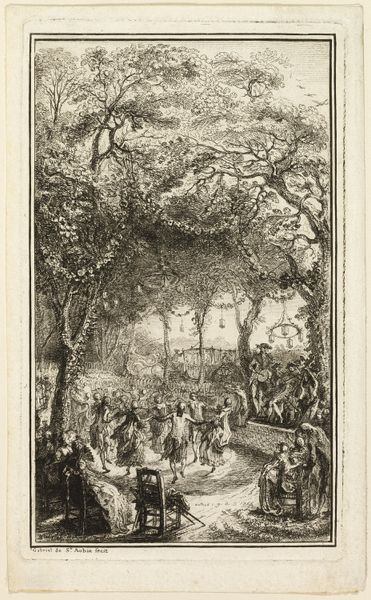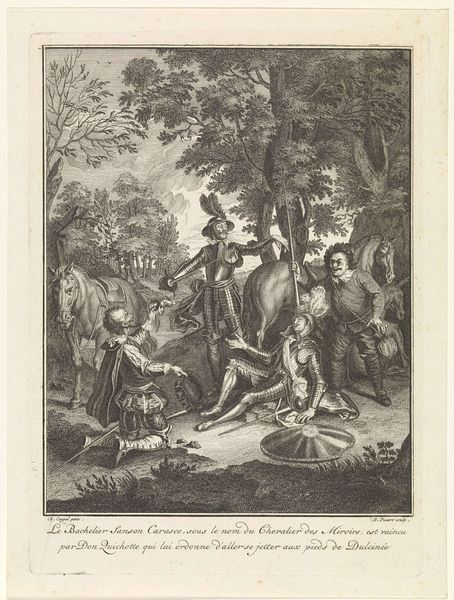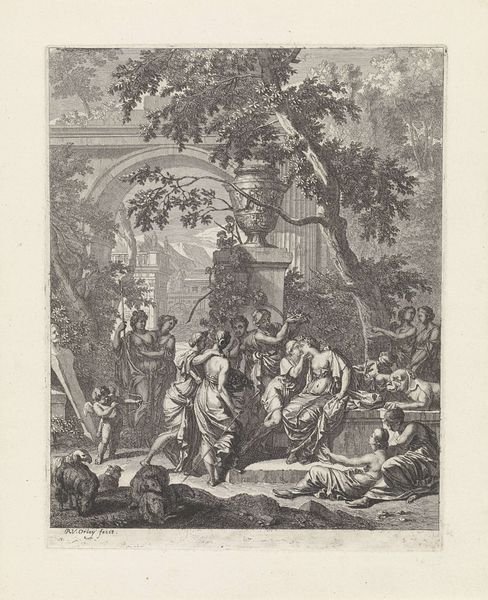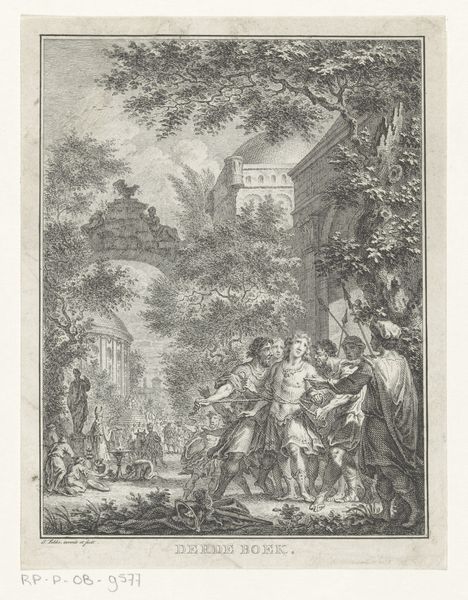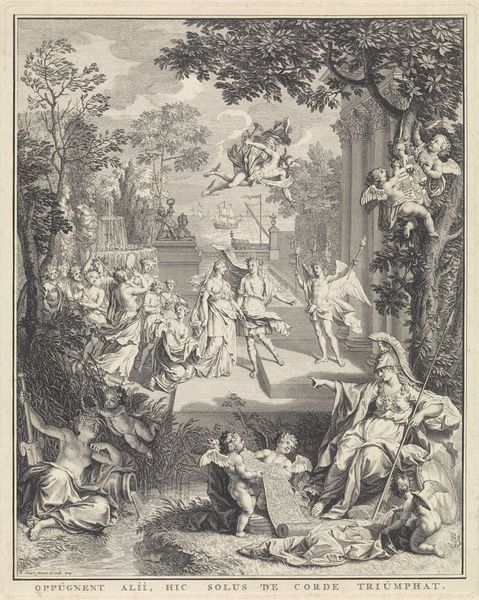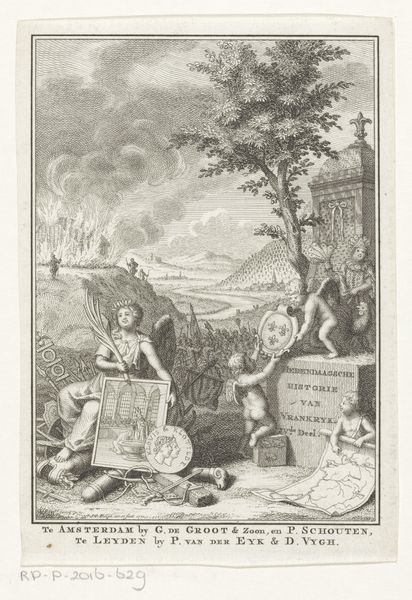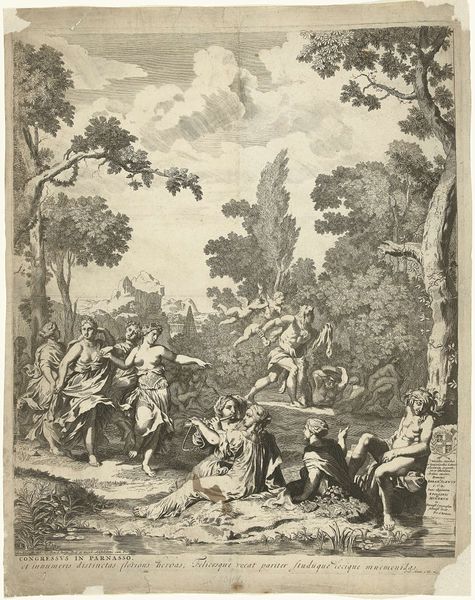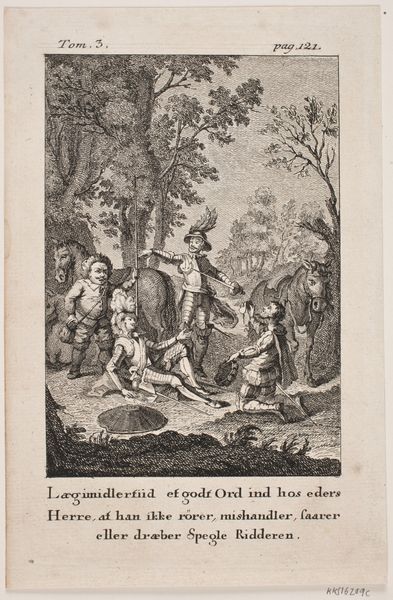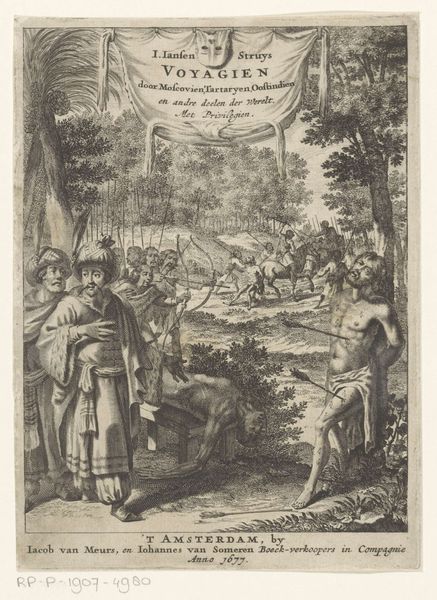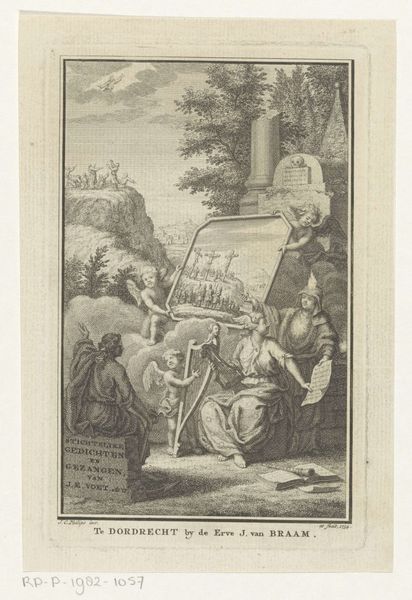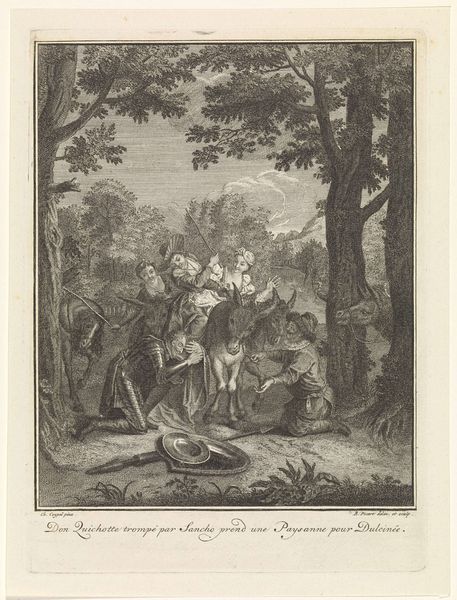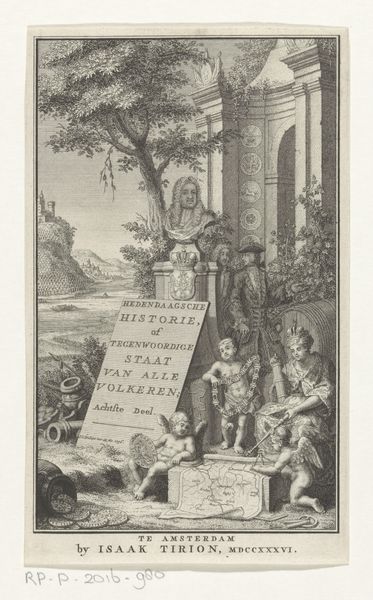
Boslandschap met herders en herderinnen die gaven brengen bij beeld van Cupido 1681 - 1719
0:00
0:00
print, engraving
#
allegory
#
baroque
# print
#
landscape
#
figuration
#
genre-painting
#
engraving
Dimensions: height 164 mm, width 104 mm
Copyright: Rijks Museum: Open Domain
Curator: What strikes me immediately is the festive air – the playful cherubs in the trees and the presentation of gifts. It feels celebratory. Editor: Indeed. What we are looking at here is an engraving by François van Bleyswijck, made sometime between 1681 and 1719. It is called *Boslandschap met herders en herderinnen die gaven brengen bij beeld van Cupido*, or "Wooded landscape with shepherds and shepherdesses bringing gifts to a statue of Cupid." It resides, appropriately, in the collection of the Rijksmuseum. Curator: So the woodland setting itself takes on a symbolic weight, acting as a space where these offerings can be made to Cupid. The statue acts like a beacon, drawing them in. And the cherubs certainly amplify the divine aspect of love, or at least its perceived divinity in the eyes of these shepherds and shepherdesses. It almost reminds me of pagan rituals. Editor: That’s an interesting association, though the image clearly derives from classical iconography that became widespread with the Renaissance. The idealization of rural life as a space for love and leisure was popular in aristocratic circles. It provided a sort of bucolic counterpoint to increasingly complex urban realities. This print might be interpreted as a commentary on courtship and the idealized versions of love consumed at the time. The text etched onto the base of Cupid's statue is fascinating. Curator: It really is! "Bemin die u bemint" is etched on the pedestal. "Love those who love you." The implications are very thought provoking when considering commitment. Also note the inclusion of loyal herding dogs lounging peacefully – symbols of fidelity no doubt – or an aspiration toward it? The emotional tone of such pastoral images might offer avenues toward such virtues as contentment and loyalty. Editor: The production of these prints themselves contributed to how society was processing questions of love. These images become conversation pieces, fueling discourse. The engraver Arnold Willis is specifically called out as the one responsible for bringing Bleyswijck’s idea to physical manifestation, connecting commerce and the imagery. Curator: Considering that printing flourished during this period, that proliferation of such images certainly imprinted visual codes and social conduct in a variety of subtle yet formative ways. Editor: Definitely, and I am left pondering on the complex interweaving of art, commerce, and social mores captured in this single print. Curator: An echo of times long past that still resonate within us, showing how symbols endure across epochs.
Comments
No comments
Be the first to comment and join the conversation on the ultimate creative platform.
